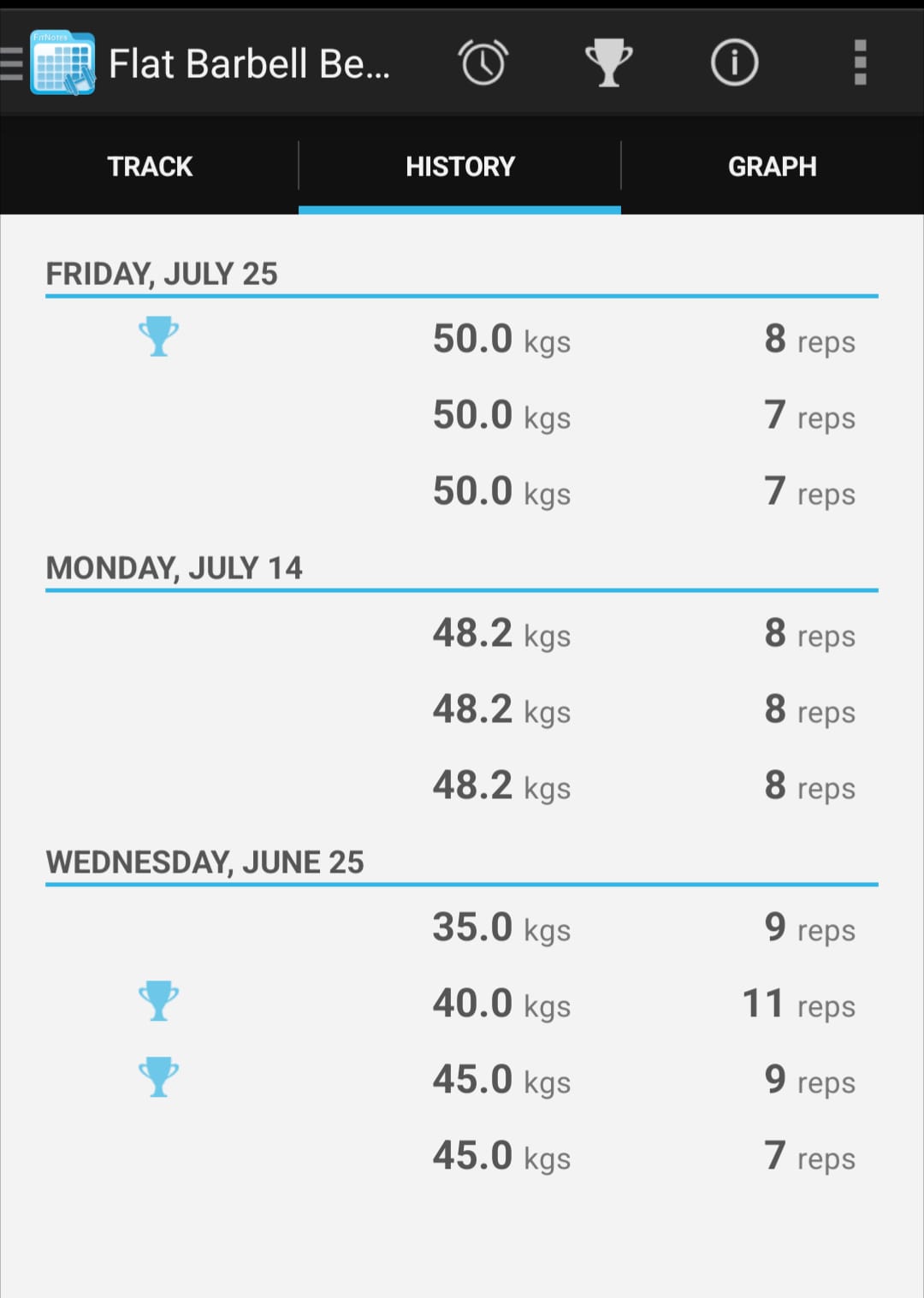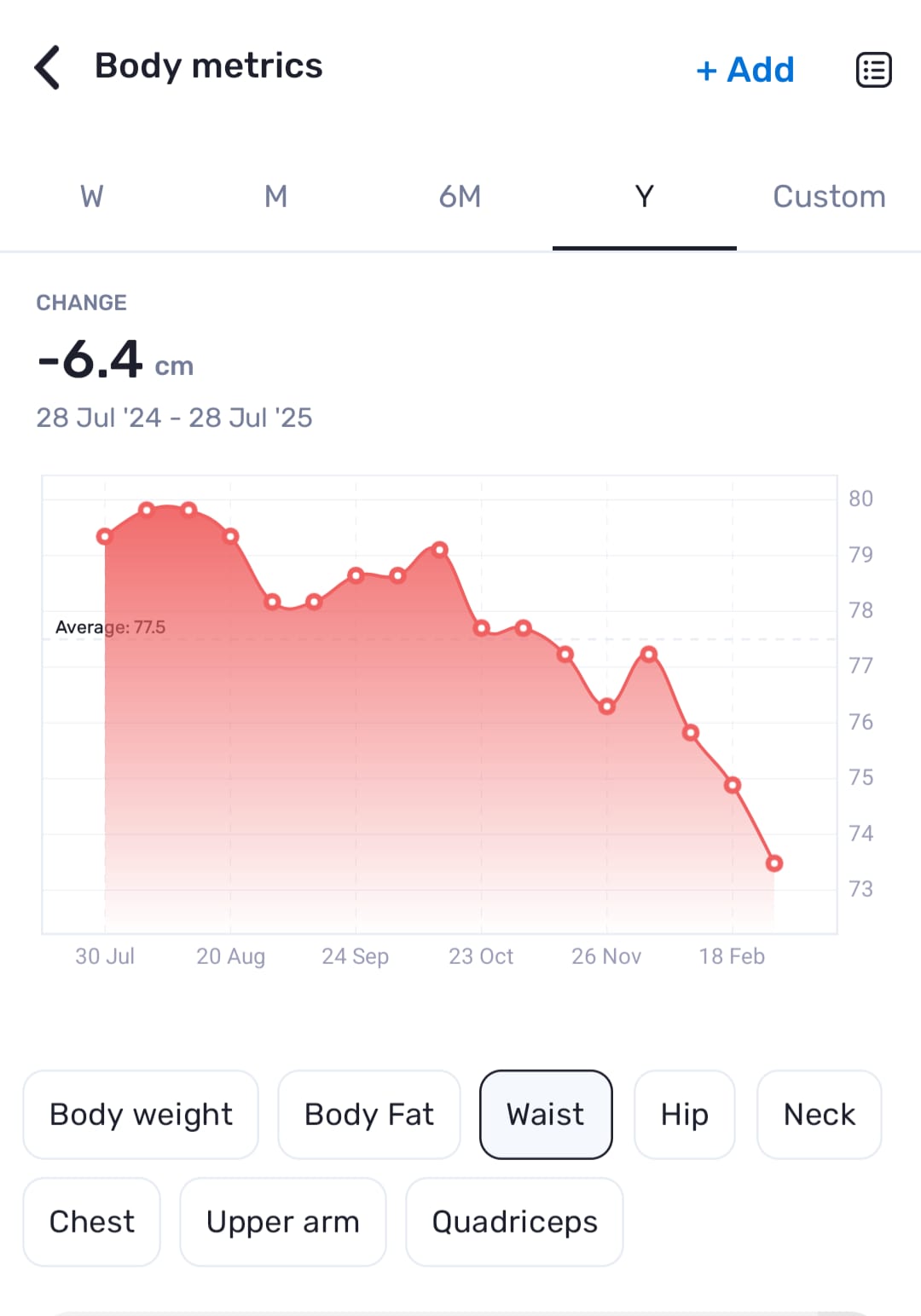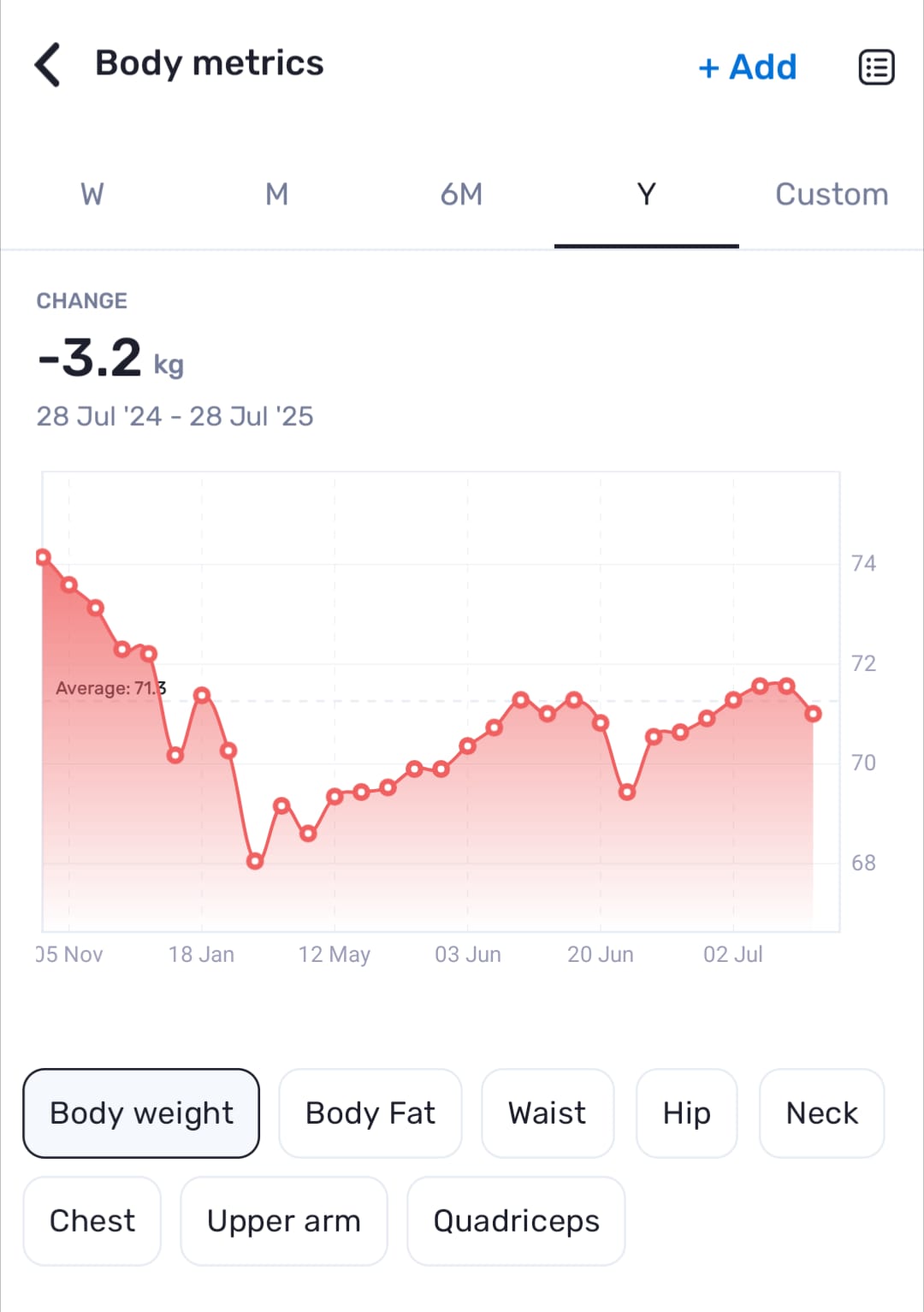How to Track Your Progress
July 28, 2025
You did everything right this week. You crushed your workouts, you ate clean, and you were disciplined. You step on the weighing scale, holding your breath, only to see the number hasn't budged. Or worse, it's gone up.
The frustration is real, and it's enough to make you want to quit. I've been there, and it's one of the most common reasons people abandon their fitness journey.
The problem isn't your effort. The problem is your measurement tool. The scale is a liar, and it's time we stopped giving it so much power.
Your body weight can fluctuate daily due to water retention, glycogen stores, salt intake, and even the time of day. It doesn't distinguish between fat loss and muscle gain. Relying on it is like trying to fly a plane with only one, very unreliable, dial.
It's time to upgrade your system. Let's build a "Progress Dashboard" - a collection of metrics that gives you a true, holistic view of your success and provides more opportunities for the "wins" that keep motivation high.
Category A: Performance Metrics (What Your Body Can Do)
This is where you see your hard work paying off in real-time. Your body is getting objectively stronger and more capable.
1. Strength & Progressive Overload
- What it is: The ability to lift more weight, do more reps/sets, or improve your form with the same weight.
- Why it matters: This is the #1 sign you're building lean muscle, which is crucial for a healthy metabolism and a "toned" physique. In my own journey, celebrating a new personal record in the gym was far more motivating than any number on the scale.
- How to track it: Keep a simple workout log (a notebook or app). Note the exercise, weight, sets, and reps. Aim to improve one of
those variables over time. For example:
- Week 1: Dumbbell Bench Press - 3 sets of 8 reps with 15 kg.
- Week 3: Dumbbell Bench Press - 3 sets of 10 reps with 15 kg.
That's a win! You got stronger. The scale won't tell you that, but your logbook will.
Here's a real example from my logbook, showing my bench press progress:

2. Endurance & Stamina
- What it is: Your body's ability to sustain effort over time.
- Why it matters: It shows your cardiovascular health is improving, which impacts everything from your energy levels to your long-term health.
- How to track it: Note how you feel. Can you walk or run a little further without getting winded? Is your heart rate lower for the same level of exertion? Do you feel less out of breath climbing stairs? These are all huge wins.
Category B: Body Composition Metrics (How Your Body is Changing)
These metrics tell you about the physical changes happening, even when the scale is silent.
3. Body Measurements
- What it is: The circumference of key body parts.
- Why it matters: You can lose fat and build muscle simultaneously, which means your weight might stay the same while your body shape is improving dramatically. Losing inches is a clear sign of fat loss. This is the "my jeans fit better" metric, and it's often more motivating than any number on the scale.
- How to track it: Every 2-3 weeks, use a simple tailor's tape to measure your waist (at the navel), hips, chest, and thighs. Record
the numbers and watch the trend. For example, here are two charts from my own journey showing how my waist measurement went down even while my body
weight stayed relatively stable:
My Waist Measurement (cm) 
My Body Weight (kg) 
4. Progress Photos
- What it is: The most powerful visual proof of your transformation.
- Why it matters: The mirror can be deceptive day-to-day, but photos taken weeks or months apart don't lie. They reveal changes you might not notice otherwise.
- How to track it: Every 2-3 weeks, take photos from the front, side, and back. Use the same lighting, same time of day, and similar clothing for consistency.
Category C: Lifestyle Metrics (How You Feel)
Fitness isn't just about how you look; it's about how you feel. These metrics are just as important as the others.
5. Energy Levels
- What it is: Your overall vitality and zest for life.
- Why it matters: A successful fitness plan should make you feel more alive, not constantly drained.
- How to track it: A simple daily journal entry. At the end of the day, rate your energy on a scale of 1-5. You'll likely see a steady increase as you get fitter.
6. Sleep Quality
- What it is: How well-rested and restored you feel upon waking.
- Why it matters: Sleep is the foundation of recovery, hormone regulation, and fat loss. Better fitness almost always leads to better sleep.
- How to track it: Note how many hours you slept and rate the quality on a 1-5 scale. Are you waking up feeling more refreshed?
A quick note: What if nothing changes?
There might be a week where your dashboard seems static. That's okay, and it's normal. An unchanging dashboard is not a sign of failure; it's a signal. It's your body's way of telling you it's time to look at making a small change—perhaps adjusting your nutrition slightly, increasing your workout intensity, or prioritizing sleep. We'll cover exactly how to do that in our next post on breaking through plateaus.
Putting It All Together: Your Dashboard Routine
This doesn't have to be complicated. Here's a simple routine:
- Daily (15 seconds): Note your energy and sleep quality.
- Each Workout (2 minutes): Log your lifts in your workout journal.
- Weekly: Weigh yourself to observe the long-term trend, not the daily blip.
- Every 2-3 Weeks (5 minutes): Take your body measurements and progress photos.
Your progress is a collection of successes: in strength, in energy, in the way your clothes fit. Start tracking what truly matters and you'll build momentum that's impossible to stop.
Stay Updated
Get a short, honest post each week on what I learned during my fitness transformation journey.
You'll receive an email with a confirmation link. Click the link to verify your subscription.
Check Your Email
I've sent you a confirmation link. Please check your email to verify your subscription.